“It brings me great pleasure to present Kudisan Kai’s self-penned story, “Cafe Gratitude: Memoirs of a Backup Diva,” the first of the Artistology Academy’s artist story series. I met Kudisan decades ago when she sang backup with my sister, Chaka Khan. Kudisan is a classically trained vocal “Diva.” Her journey gives a backstage view of what life is like for a voice that has supported some of the greatest artists of our time.” Tammy McCrary, Founder of Artistology Academy
In her forthcoming memoir, veteran background singer Kudisan Kai shines a spotlight on the trade-offs, challenges, and rewards of maintaining a successful career backing up world-renowned recording artists. To fans, it seems a fun and glamorous path but in the following excerpt, Kai shares the realities of surviving in this little-celebrated profession.
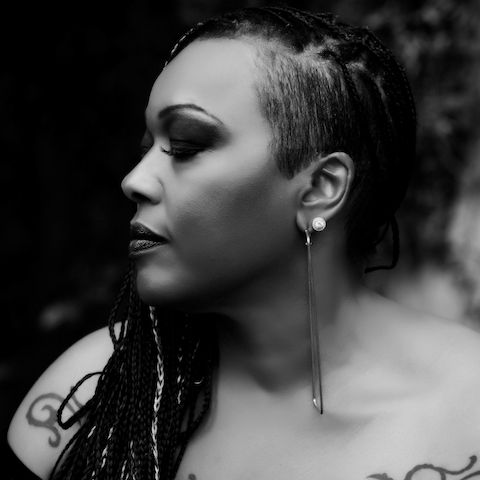
Kudisan Kai
by Kudisan Kai
I am surrounded by pictures of Audrey Hepburn. Two pictures, actually. Both are from the film Breakfast At Tiffany's, of “Holly Golightly” with the little black dress, pearls, and tiara. One of the pics is simply a portrait. The other has her blowing a large aqua bubble, obviously from chewing bubble gum. Perhaps this represents a sense of innocence or audacity. But why is a picture of Ms. Hepburn—excuse me, Golightly—hanging in a Korean spa and at a hotel bar/lounge? It speaks to the seemingly “grounded in unreality” culture of a city known to be the home of wealthy movie stars and other members of the music, movie, and television industries.
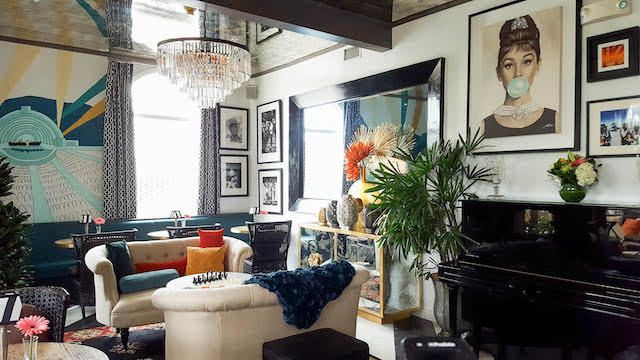
The Crescent
OK, the aqua bubble gum picture hangs in the bar of The Crescent, which is a boutique hotel in the heart of Beverly Hills. It is a favorite spot of mine on Monday nights, a place filled with sometimes wealthy, sometimes eccentric, sometimes creative, and many times weird wannabes living on the periphery of life. It’s quite a collection of personalities, really. Come to think of it, it’s the perfect place for Holly Golightly to be portrayed: A lot of drunk people in Gucci and Chanel perpetrating celebrity, trying to be hip and more important than they really are. They try in vain to dance and groove with a funk/rock/pop/R&B/jazz band comprised of Maxayn Lewis, a former Ike and Tina Turner Ikette; bassist Bobby Watson, former member of the ‘70s R&B group Rufus featuring Chaka Khan; Allen Hines, former guitar player for Natalie Cole; and Donald Barrett, former drummer with Toni Braxton. They call themselves The Cookies and they are “kicking ass,” by the way.
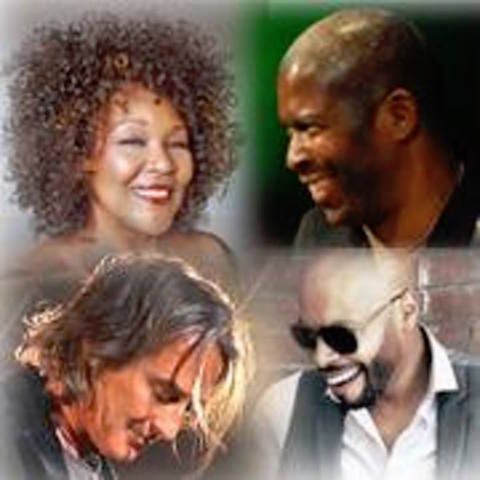
“The Cookies”: Maxayn Lewis, Bobby Watson, Allen Hines and Donald Barrett.
Mixed in with the wannabes are the real celebrities and/or used-to-bes in the music industry. The combined résumés of every musician in that room would read like a Grammy Encyclopedia, representing every star in every music genre you could dream of. There is Skooter Warner, drummer with Cyndi Lauper; Doc Gibbs, former percussionist with Al Jarreau; Valerie Pinkston, singer with Diana Ross and former singer with Whitney Houston. At times the place has hosted rock star Gene Simmons from KISS, recording artist Randy Crawford, known for her hit “Street Life” with the iconic jazz group The Crusaders, and recording artist/bassist Me’Shell Ndegeocello, who came on the scene in the ‘90s doing the duet “Wild Nights” with John “Cougar” Mellencamp. Because the level of musicianship is so high, all of these celebrities love to jam with The Cookies. It’s always a great hang for good music. Like the line from Forrest Gump about a box of chocolates, “you never know what you’re gonna get.”
And then there’s me, back in Los Angeles once again, fresh off the road from touring with Chaka Khan for the third time in my career. I haven’t lived in L.A. for more than 15 years but here I am, back in town, trying to re-establish myself, this time as a recording artist and songwriter. I have never been either in this town. When living here before, my jobs included session singing for recordings, television, and film, and touring as a backing vocalist for major recording artists. Being a session/touring backup singer is an art form unto itself, with its own unique skill set. In addition to singing, technique, and chops, a backup singer must have the gift of the “ear” to do this job. While a singer may have technique and chops, not every singer has the ear to execute the skills of background singing. Most people aren’t aware of the intricacies of the profession. Being gifted with a good ear, perfect pitch, classical training and sight-reading skills made me the perfect candidate for this career. But so much had changed in my artistic life that I needed to make some adjustments.
So, here I am back at The Crescent. I walk into the place with Prada sunglasses perched on my blonde punk rock Mohawk, dressed all in black with vintage ‘90s tall Doc Martens boots, approach the bar and order a vodka and pink grapefruit juice and a veggie burger. Before the night is over, I am reacquainted with several musicians, some of whom I’ve known for more than 20 years. We have worked together on television shows like Oprah Winfrey, The Tonight Show, Arsenio Hall, and Rosie O’Donnell, or done live performances, movies, and of course records with some of the world’s most famous music icons. There’s drummer Jonathan “Sugarfoot” Moffett, with whom I toured with Elton John. There’s singer Sandy Simmons, my former band mate with Anita Baker and Natalie Cole. There’s drummer Alvino Bennett, from my first tour with Chaka Khan. It feels like I’m back home with people who know me and really “get” me—fellow working musician/artists who, like me, made the choice to fully commit to this music business for a living. This is a good feeling, for acceptance is a major concept for most human beings and definitely in the top three necessary emotions of an artist like myself. Hmmm ... “artist.” More on this later.
I was returning to Los Angeles from a non-consecutive 10-year teaching stint at Berklee College of Music in Boston, where many in my circle believe I should have remained. My choice to leave the music business once my daughter became old enough to attend school was intentional; it was time for a change after having been on the road non-stop for 15 years. I wanted to be an “in town” parent, expanding other parts of my brain, and was lucky enough to get a position teaching at one of the most renowned music colleges and performing arts conservatories. However, after three or four years of teaching as an Associate Professor, I started to miss my artist life. I’d become conflicted about my place in the scheme of things, and about having what family and some friends deemed a “real job.” That conflict in itself was troubling. Did I really want a static, stable job, or had I been programmed to want it? Friends and relatives would say “Hey, it’s a real job. You’d be crazy to give up such security for happiness, following what you ‘think’ is your life’s purpose.” I would say yes, I had a full-time position with a consistent paycheck every two weeks, which was something a musician rarely knows (except when you are on the road, which pays you at the end of each week). But, I would not go so far as to say that I felt secure. Actually, it felt suffocating being locked into an “educator only” position because the job was so consuming. There was no time or energy left to also be an artist. Further, the next and last step in my academic career would be a Full Professorship. However, the salary was not significantly higher so there was no financial expansion and the job description was the same.
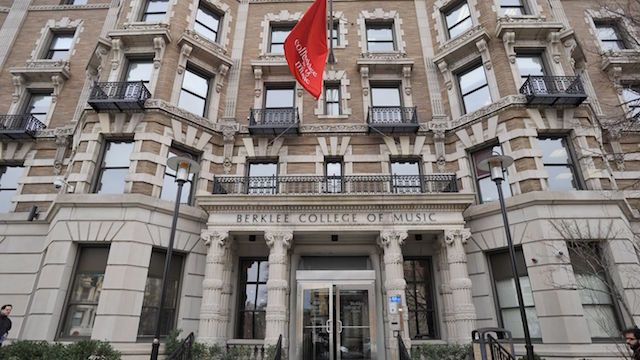
“Home” for 10 years where I was a Professor teaching Vocal Performance
Artistically, my music business experience came from Los Angeles and New York City, which included movies, television, tours, and records, in addition to live performances and plays. The music industry in Boston was basically wedding bands, clubs, and some theater. These wedding bands/club gigs were known as “general business” or “GB” gigs. They pay well in that wedding band circuit. But in Los Angeles, GB gigs were just one of several work options available for a musician to get paid. While the cost of living was lower in Boston than in L.A, or N.Y.C., it was still quite expensive, which brought me to the final conclusion: In order to really be financially stable as a musician, you need to actively create several streams of income. In New York or L.A. it was easier to find paying gigs in the real music business: tours and recording sessions, union-governed sessions for television shows, films, TV and radio commercials, where a musician can also receive health benefits and pension plans. Even recording artists have several streams of income, ranging from voiceovers to songwriting to acting to branding with clothing lines and other products, just to name a few.
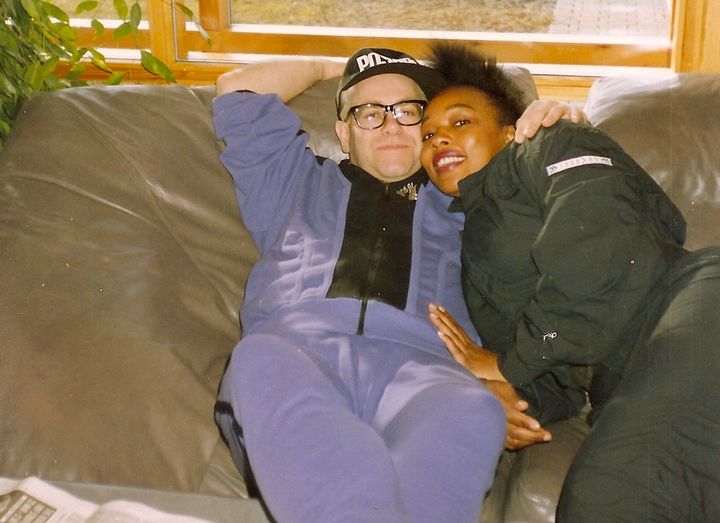
Me and Elton John in Randers, Denmark, recording his Sleeping With The Past CD.
But in Boston, GB gigs are mostly how musicians get to play. However, most have to rely on non-music-related vocations to pay rent, buy a house, get health benefits and establish a pension plan. This can be problematic, especially with scheduling and 9-to-5 jobs. For me as a solo artist, specifically in the rock music genre, finding work was a virtual impossibility. There were only a few venues in which to perform, and being a black woman singing this genre only made things more challenging. There was little room for me to grow as an artist.
There’s that word artist again. So, let’s talk about being an artist. Whether you are a solo artist or backing musician, it can be quite a precarious life. Contrary to all the press that describes the lucrative incomes and lifestyles of music stars, most people are clueless as to how musicians and backing singers make a reasonable living. Some think of this life as poetic, fun, free-spirited, with a lot of celebrity parties; some think of music creators as not really working, which for some means that they don’t have a true grasp on reality, whatever that means. They think it’s like being a spiritual vagabond, or a butterfly, flitting around aimlessly from one gig to another. Most people with regular jobs think the life is crazy, irresponsible, unbalanced, reckless and unsettling. The ultimate judgement always centers around money. Most 9-to-5ers only understand the concept of getting paid every two weeks, which they feel offers that sense of security, knowing in advance what their financial situation will be, which they believe makes it easy to budget and plan financially.
While that view is understandable because it reflects the majority, there is more than one way to make a successful living and take care of bills. Artists seem to always live in a state of the consistent present. They live in the moment. They don’t worry about future gigs. When an artist is in the flow, they assume there will always be another gig. All that matters is right now. Most people can’t wrap their brains around how an artist can plan for a future, living in the present. Basically, artists don’t plan for the future, they assume the future. For artists, all that matters is the present. Many times, this belief system is contradictory to the belief system in an artist was raised in.
This was the case for me, and it made my life extremely challenging. And though this artist life chose me, the lessons I learned being raised in a non-artistic household were priceless. While most people, including family members, criticized artists for living day-to-day, for being different and dressing different, these same people idealized this life. Some would tell me they wished they had the talent to sing. “It takes balls to put yourself out there on the line,” they would say. While never judging anyone for the choices they made in their lives, I took the talent that was given to me and tried to make the best of it, honoring it as best as possible. This was not the case for many around me, who were in non-artistic vocations. The judgement hammer swung fiercely and I was always ducking the blows. My non-confrontational persona would simply bury the criticism with a bag of chips or a bowl of popcorn. That would also become a problem later.
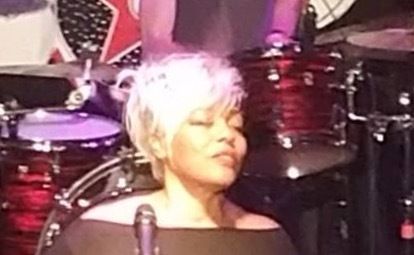
Kudisan Kai
During the 15 years I spent as an artist/session/tour singer, there was always another gig. I was able to pay my rent and my bills, go out to eat, buy clothes, and even go on vacations. I had PPO health benefits and a pension plan through both unions. I was always debt-free and “security” was my middle name. Doing what I felt at the time was what I was divinely placed on this planet to do always provided me with income. Residual checks were expected every time I went to my mailbox, and what was expected was always received.
But then two things happened: I became a single parent and questioned whether to continue touring, and a union strike caused a major shift in the music business. Only then did my income begin to fluctuate.
In Part 2 of Café Gratitude, Kai shares how motherhood impacted her career and her goals.
Kudisan Kai is a singer/songwriter, former backing vocalist for Chaka Khan and Elton John and former Berklee College of Music professor. Currently, she is writing her memoirs, finishing her signature Vocal Performance Program for www.artistologyacademy.com which launches this May, and is a cast member of the upcoming television documentary-series “Back Up Divas Rising.”
